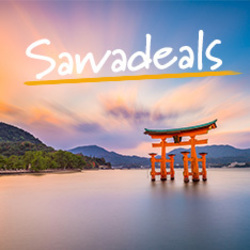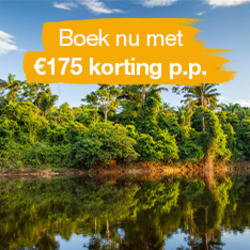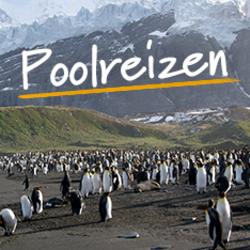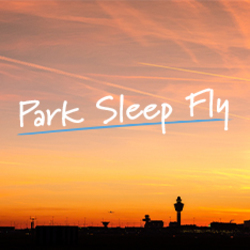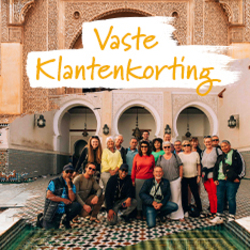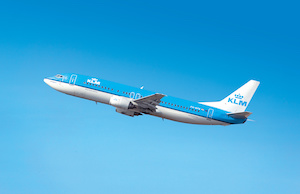Profiteer t/m 1 augustus
BekijkActivities
- Walking & Trekking
- Wildlife Walks
- Coastal Walks
- — Trek to the crater rim of the Sierra Negra volcano — Enjoy plenty of island walks to discover the Galapagos landscape — Experience incredible wildlife-viewing and photographic opportunities with near-tame animals — Snorkel with iridescent fish, playful sea lions and turtles — Island hop by motorboat but sleep in hotels and lodges
Food
-
1
Start Quito
Aim to arrive at the hotel this afternoon/evening. Free transfers are available for all clients – make sure to check the Joining Instructions for information on how to secure your spot. Accommodation: Hotel Vieja Cuba (or similar)
-
2
Quito city tour
This morning, we gather for the first time as a group at the welcome briefing and then take a guided tour of the main city sights. Quito is the second-highest capital in the world, standing at 9,350ft (2,850m) on the western cordillera of the Andes. It is one of the smaller and more attractive of the colonial capitals in South America. Due to the altitude, you are advised to take it easy at first. Accommodation: Hotel Vieja Cuba (or similar)
-
3
Fly to San Cristóbal; visit the Galapagos Interpretation Centre
Transfer to Quito Airport and fly to San Cristóbal in the Galapagos Islands. On arrival, we settle into our hotel and have time for a light lunch in the small town and a visit to the Galapagos Interpretation Centre. This afternoon, we walk to the cliffs at Las Tijeteras to see frigatebird colonies. There is also time to swim and snorkel close to a sea lion colony. Accommodation: Hotel Paraiso Insular (or similar)
-
4
Snorkel León Dormido and walk along one of three white-sand beaches
We travel by small motorboat to Kicker Rock (also known as León Dormido), an impressive lava tuft formation. Several species of nesting seabirds reside here, including masked boobies. We have the opportunity to snorkel and, with any luck, spot eagle rays, Galapagos turtles, hammerhead sharks and a great variety of colourful fish. We continue by boat to one of three white-sand beaches where we can walk: Playa Ochoa, Playa Manglecito or Cerro Brujo. Playa Ochoa is an expanse of white sand dominated by a large sea lion colony and is home to many birds and marine iguanas. Playa Manglecito offers both the opportunity to visit a white-sand beach and a mangrove area. Cerro Brujo is in a volcanic zone, has abundant vegetation and is home to sea lions, marine iguanas and many birds. Accommodation: Hotel Paraiso Insular (or similar)
-
5
San Cristóbal highlands walk; snorkelling at Puerto Chino
After breakfast, we drive to the San Cristóbal highlands. A one-hour walk brings us to the fringe of El Junco Lake, one of the few permanent freshwater lakes in the Galapagos where frigatebirds can often be seen bathing nearby. The highlands offer panoramic views across the smaller islands lapped by the Pacific. Afterwards, we visit a reserve where Galapagos giant tortoises roam free before snorkelling in a nearby bay. After lunch, we can visit La Loberia, a sea lion nursery, the perfect place to unwind surrounded by colonies of sea lions and marine iguanas. Accommodation: Hotel Paraiso Insular (or similar)
-
6
Boat to Floreana; visit highlands
A three-hour navigation by motorboat takes us to Floreana, one of the first islands to be inhabited in the Galapagos. En route, we may see whales, dolphins and sea birds. After lunch, we visit the highlands, where one of the few sources of freshwater in the entire archipelago exists. Visit lava caves once used by pirates and see a large enclosure of Galapagos giant tortoises. Accommodation: Hotel Wittmer (or similar)
-
7
Visit sea lion colony on Floreana; sail to Isabela and visit the Wall of Tears
After an early breakfast, we go on a walk to discover the black volcanic beaches, which are home to red iguanas and sea lion colonies. There is also time for snorkelling this morning (please note, the visit to this beach might be done in the late afternoon on Day 6 on some departures). Just before midday, we navigate to Isabela and see Tortuga Island, a huge eroded marine crater where thousands of sea birds, such as blue-footed and nazca boobies, pelicans and frigatebirds, nest. This afternoon, we visit the Wall of Tears, a reminder of Isabela’s very different past when the island was used as a penal colony. Between 1946 and 1959, convicts were forced to build this wall from huge blocks of lava simply as a form of punishment, which, combined with the harsh conditions, led to many deaths. After this sobering visit, we hike back to the town through mangroves, wetlands and along sandy beaches. This is one of the best places on the islands to view migratory birds, including Wilson’s phalaropes, blue-winged teals and, if we’re very lucky, ospreys. This region has also seen the reintroduction of Galapagos giant tortoises from the breeding centre and we are likely to encounter several on our walk. Accommodation: San Vicente Hotel (or similar)
-
8
Sierra Negra volcano trek
Our first day of trekking on Sierra Negra. It takes us across stark, lava-strewn highlands punctuated by miconia shrubs and other vegetation. The otherworldly landscapes are incredible and we pass many volcanic features along the way, where we can observe fumaroles and a variety of lava formations. Accommodation: San Vicente Hotel (or similar)
-
9
Trek to the Sulphur Volcano
We have a long day to reach the Sulphur Volcano and we need to trek approximately 16mi (26km). If anybody wishes to turn back at a halfway point, we have two local guides and can therefore split the group into two. Please note, we may not be able to descend into the crater to visit the fumaroles, depending on the level of volcanic activity. Accommodation: San Vicente Hotel (or similar)
-
10
Snorkelling excursion in the Cabo Rosa area
Today we snorkel in the Cabo Rosa area. On this snorkelling trip, we can swim with sea turtles, manta rays, marine iguanas and many different fish species. Accommodation: San Vicente Hotel (or similar)
-
11
Visit Las Tintoreras; afternoon free to relax
We spend the morning sailing to the islets and lava channels of Las Tintoreras, one of the best places in the islands to see whitetip reef sharks, plus penguins and sea lions. There is time for snorkelling. On this morning’s excursion, we may be lucky enough to spot the endangered chatham mockingbird. The afternoon is free for swimming, snorkelling, walking or just relaxing on one of the beaches around Puerto Villamil. Accommodation: San Vicente Hotel (or similar)
-
12
Sail to Santa Cruz; optional visit to Charles Darwin Research Station; visit Tortuga Bay
We navigate by motorboat to Santa Cruz very early this morning and have breakfast at our hotel. After breakfast, we have the option of visiting the Charles Darwin Research Station, which is home to the headquarters of the Charles Darwin Foundation. This is the main research centre on the islands and scientists come from all over the world to study the flora and fauna here. After our visit, we have lunch at a local restaurant. Our destination this afternoon is Tortuga Bay, a long stretch of white sand regarded as one of the best beaches in the Galapagos. The trail leading to the beach is paved and takes between 45 minutes and one hour, with possibilities to observe Galapagos finches and lizards along the way. The beach is scattered with marine iguanas, who lay among the clusters of black rocks or stroll along the sand. In the water, turtles can sometimes be seen. Swimming is not recommended here due to strong currents. After a relaxing afternoon, we hike the same route back towards the main town of Puerto Ayora where our hotel is located. Accommodation: Mainao Hotel (or similar)
-
13
Explore Bartolomé, South Plaza Island or North Seymour
Visit either Bartolomé Island, South Plaza Island or North Seymour (depending on the national park restrictions). South Plaza Island has a remarkable vegetation of succulents and cacti that provide a unique habitat for land iguanas. The iguanas form small colonies at the base of the tall opuntia cacti, waiting for their flowers and dead pads to fall to the ground so they can feed on them. The island rocks are home to swallowtail gulls, shearwaters and sea lions. North Seymour is a flat, boulder-strewn island and a major nesting site for frigatebirds. It’s also a good place to see blue-footed boobies performing courtship rituals and sea lions playing in the powerful surf. Bartolomé is a spectacular scene of dramatic lava cones, clear seas and affords perhaps the most famous view of the Galapagos Islands, looking across the red cinder cones to the recent black lava fields on James Island. If possible, we snorkel today (usually around Bartolomé) where the water is calm. Accommodation: Mainao Hotel (or similar)
-
14
Fly to Guayaquil; end Guayaquil
After breakfast this morning, we drive to the airport at Baltra and fly to Guayaquil where it’s possible to connect with international flights this evening from 6pm onwards. You may prefer to arrange post-tour accommodation for the night in Guayaquil and organise your international flights for the following day, in case of delays returning from the Galapagos to mainland Ecuador.




